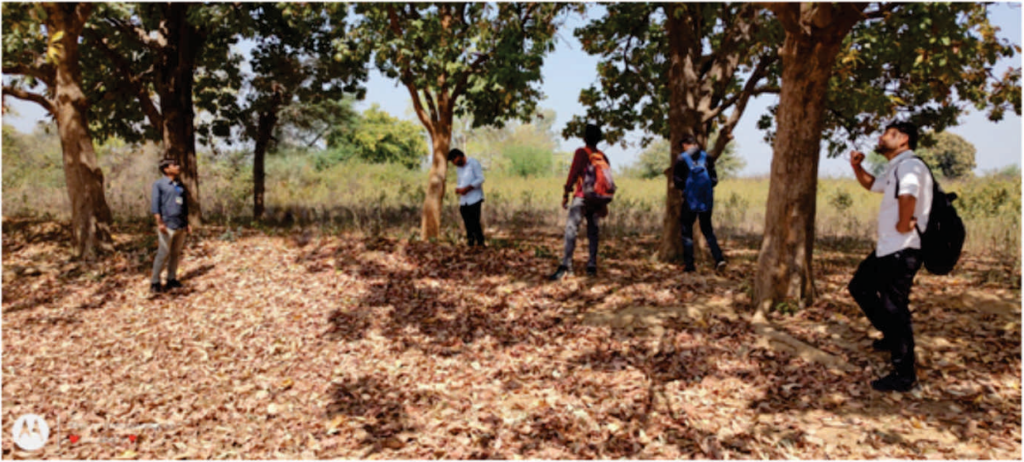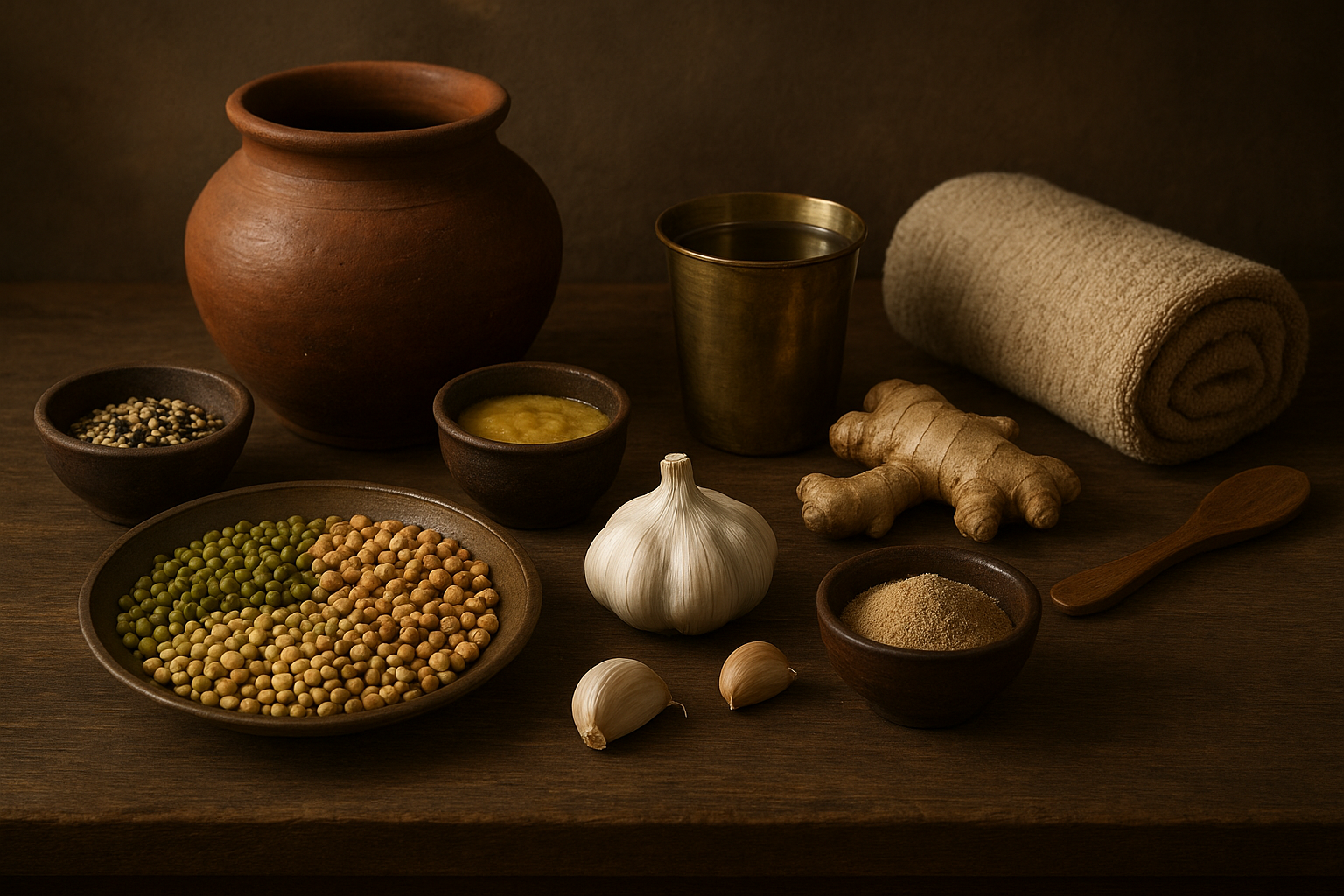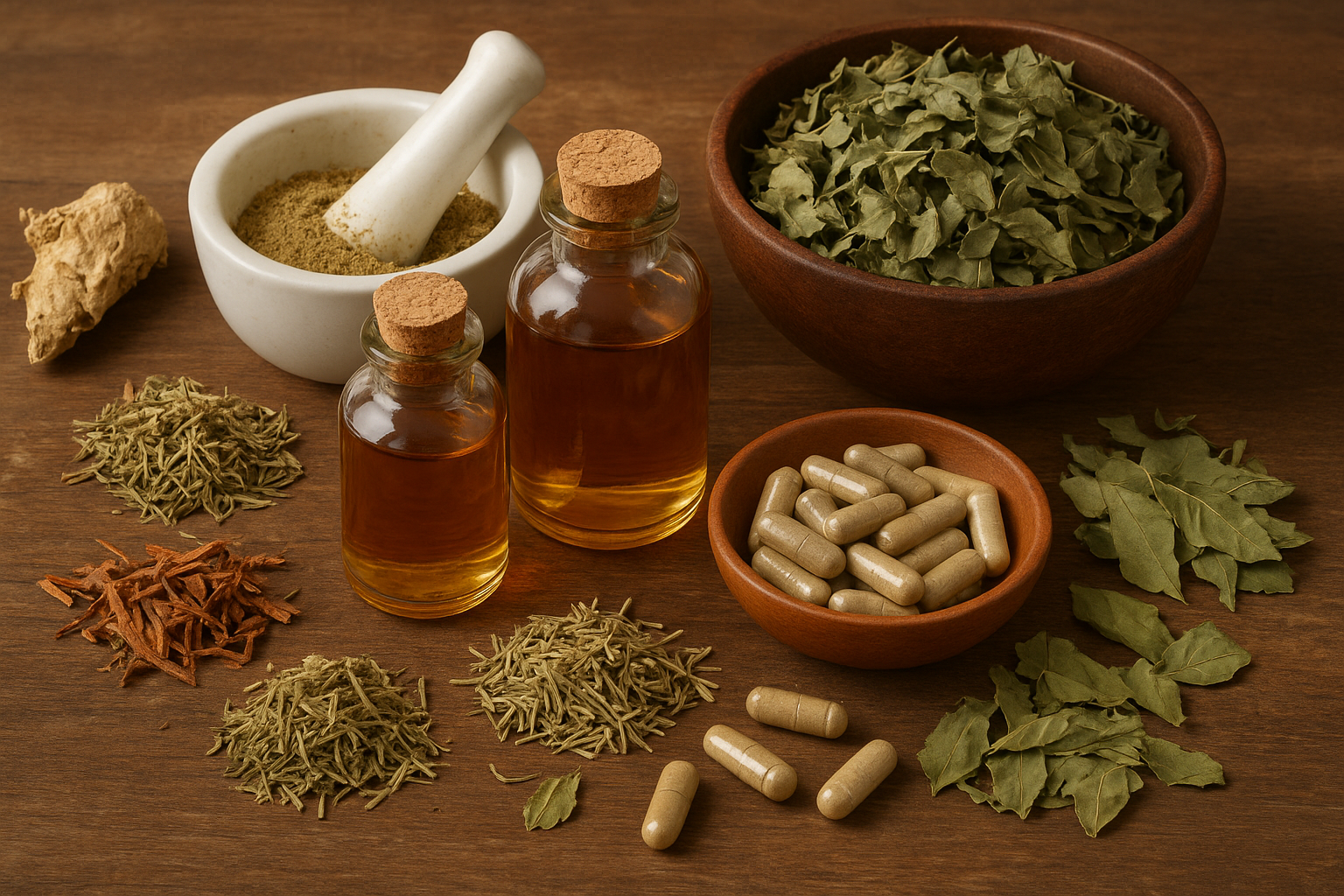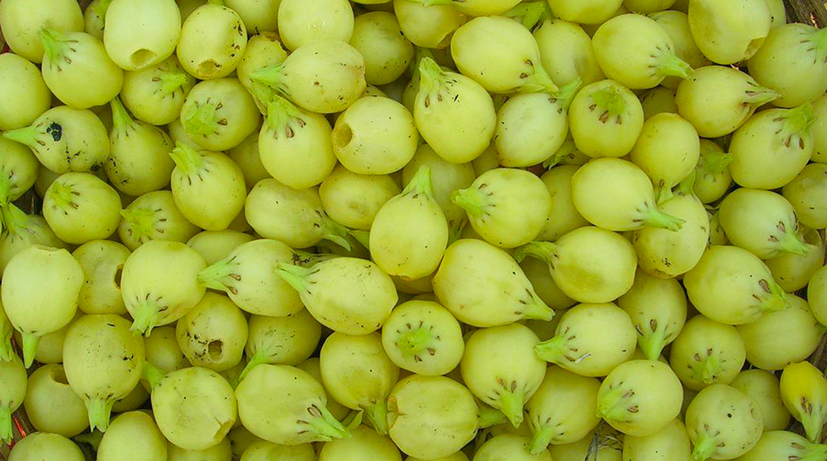MAHUA (Madhuca Longifolia) A Multipurpose Tree Species of India : A Review
ABSTRACT
Mahua (Madhuca longifolia), a vital multipurpose tree species native to India, holds significant ecological, economic, and cultural importance. Widely distributed across tropical and subtropical regions, it thrives in arid and semi-arid zones. Mahua is renowned for its diverse uses, including edible flowers for food and beverages, oil-rich seeds for culinary and industrial purposes, and timber for construction. The tree also serves as a critical source of fodder, benefits include soil conservation, carbon sequestration, and enhancement of biodiversity. Mahua plays a central role in tribal communities, particularly in India, where its products are integral to local economies and traditions. Despite its potential, overexploitation, habitat loss, and climate challenges threaten its sustainability. This review highlights the multifaceted utility of Mahua, emphasizing the need for conservation strategies and sustainable utilization to balance its ecological and economic significance. Keywords: Edible Flowers, Climate Resilience, Rural Economy, Oil extraction, Tribe & Medicinal.
INTRODUCTION:
Mahua (Madhuca longifolia), a tropical tree species native to India, holds immense cultural, ecological, and economic significance. Belonging to the family Sapotaceae, it is widely distributed across central and northern India, particularly in dry and semi-arid regions. Known as the “Tree of Life” in many tribal and rural communities, Mahua is valued for its diverse uses and resilience to harsh climatic conditions The Mahua tree grows to a height of 15-20 meters and is characterized by a dense, spreading canopy, making it an effective shade tree. Its adaptability to various soil types, including marginal and degraded lands, contributes to its importance in afforestation and soil conservation efforts. The tree’s multipurpose utility is primarily attributed to its flowers, seeds, and wood. The fragrant, fleshy flowers are rich in sugar and are traditionally used to prepare local beverages and sweets. Additionally, they serve as a vital source of nutrition and income for tribal communities. Mahua seeds yield a high-quality oil, which is used for cooking, making soaps, and producing biofuel. The residual seed cake is an excellent organic fertilizer. Mahua wood, though not highly durable, finds application in making furniture, construction materials, and fuel. The tree’s bark and leaves are utilized in traditional medicine to treat ailments such as skin diseases, ulcers, and rheumatism. Moreover, Mahua plays a crucial role in supporting biodiversity, providing food and habitat for a range of wildlife species. In the context of sustainable development, Mahua offers a viable solution for rural livelihoods, energy security, and ecological balance. Its cultural and economic relevance underscores the need for conservation and promotion of this remarkable tree species in agroforestry and reforestation programs across India.
AREA AND PRODUCTION:
Mahua is a frost resistant species that can grow in marginal areas of dry tropical and subtropical forests up to an altitude of 1200-1800 m, in India. It requires mean annual temperature of 2-460 C, mean annual rainfall ranging from 550-1500 mm and mean annual humidity from 40-90 percent. Mahua trees are distributed from India to other Asian countries like The Philippines, Pakistan, Sri Lanka to Australia. It can be found scattered in pasture lands in central India, and on river banks in semi-evergreen forests. In India, large quantities of Mahua trees are found in the states of Uttar Pradesh, Madhya Pradesh, Orissa, Jharkhand, Chhattisgarh, Andhra Pradesh, Maharashtra, Bihar, West Bengal, Karnataka, Gujarat, Rajasthan and the evaluated annual production of Mahua flowers is 45000 Million tonnes. The yield of Mahua flowers varies from 80-320 kg for every tree. Madhya Pradesh is the most astounding Mahua developing state with average trade volume of 5,730 metric tonnes and worth about Indian rupees 8.4 million (Behera et al., 2016).
CLIMATE AND SOIL:
Mahua prefers tropical climate. It can withstand drought admirably. This tree does not survive under waterlogged conditions. Since it is a very hardy tree, it can grow even in pockets of soil between crevices of barren rocks. Trees even grow on degraded rocky areas including salt- affected soils. However, for its better growth and productivity, well drained, deep loam soil is ideal.
CULTIVATION AND COLLECTION:
This is a wild tree so at present it is not cultivated intentionally and naturally found in nature, but nowadays there is a strong need to cultivate this plant and make necessary changes in its genetic structure to make it more useful for commercial purpose. The application of scientific knowledge and agriculture tools is much needed to make this plant more disease resistant and more flowering along with the enhancement of chemical constituents. The cultivation of Mahua should be done on either wild land for better availability of constituents and its seeds should be spread in the farming areas for the future collection of flower, unripe, and ripe fruits may become easier. Cultivation is generally done in the month of July to September and generally, flowering takes place in March and April. After this time, the flower converts into fruit which is also useful in both unripe and ripe conditions. Although every part of Mahua plant is useful, flower, fruit, seeds oil, and seed cake are more important (Patel et al., 2019).
Table-1 Constituent Present different Parts of Mahua.
| Plant Part | Phytoconstituents |
| Bark | Flavonoids, Triterpene, Sterol |
| Leaf | Moisture, Organic Matter, Minerals, Potash (K₂O) Phosphoric Acid(P205) Silica, Alkaloids, Flavonoids, ProtobasicAcid |
| Latex | SolubleResin, InsolubleResin |
| Flower | Carotene, AscobicAcid, Thiamine, Riboflavine, Niacine, Folic Acid, Biotine, Inositole |
| Mature seed | Moisture, Protein, Fat, Carbohydrates, Minerals, Calcium, Phosphoras, iron, Carotine, Ascorbic Acid, Tannins |
USE OF MAHUA AS A FOOD:
- Raw consumption of Mahua: In spite of being a rich source of nutrition and easyavail ability in the rural areas these flowers are not very popular as food. Only a small quantity of flowers is consumed raw, cooked or fried in different parts of India.
- Utilization of Mahua for processing of different food products Sugar syrup: Abhyankar and Narayana, 1942 reports on preparation of sugar syrup from dry Mahua flowers, which can be further use as a sweeting agent in different food products.
- Utilization of Mahua for processing of different food products Sugar syrup: Abhyankar and Narayana, 1942 reports on preparation of sugar syrup from dry Mahua flowers, which can be further use as a sweeting agent in different food products. Patel, 2008 prepared the Mahua jam and jelly byusing fresh flowers. The developed products were tested for their colour, flavour, taste, texture and overall acceptability, using hedonic test. According to the findings of hedonic test all the developed Mahua products were found to be highly acceptable.
- Bakery and confectionary: Candy, biscuits and cake were prepared using the Mahua concentrate as a liquid sweetener.
- Puree and sauce: Patel, 2008 used fresh flowers and crushed it into puree (after manually removing the stamens) and processed it into sauce.
Table-2 Traditional uses of Mahua in India.
| Plant Parts | Medicinaluses | References |
| Bark | Antidiabeticactivity | Kumarand Vidhysagar,2011 |
| Flower | Analgesicactivity | Chandra,2001 |
| Leaves & bark | Woundhealingactivity | Sharmaet al., 2010 |
| Leaves | Nephroandhepatoprotectiveavtivity, antioxidantandcytotoxicactivity | Palaniet al., 2010 |
| Leavesandstem | Antimicrobial activity | Khond et al., 2009 |
| Seeds | Effectivetoalleviatepain | Prashanthand Annsmpelli, 2010 |
| Seedcake | Anti-inflammatory, antiulcer, and hypoglycaemicactivity | Seshagiriand Gaikwad, 2007 |

Nutritional and Medicinal Uses:
The Mahua tree is having lots of nutritional value in it. It produces fruit which is valued forits seed which yield high quantity of fat commercially known as Mahua butter or mowrah butter, many edible and medicinal applications and it is also used as a biodiesel. Its fat has been used as substitute for cocoa butter and ghee. It is one of the single largest sources of natural hard fat. The fat which is thus obtained from Mahua fruit oil is used in cooking, frying and manufacturing chocolates. The seed fat has emulsion propertyso it mostlyused as an emulsifying agents in few pharmaceutical industries. It is generally applied as massage oil in many part of the country, as it is very good to moisturize skin. Besides edible and medicinal uses, Mahua has industrial application as it can be utilized in the manufacture of laundry soaps and lubricants. Moreover, the seed cake is reported to have insecticidal and pesticide property and used as organic manure in crops like rice, sugarcane etc. Themedicinal propertieswhich areseen in this plant arestimulant, demulcent, emollient, heating. Skin disease, rheumatism, headache, laxative, piles, and sometimes as galactogogueastringent and many more. Review of literature based on chemical composition of mahua flower reveals its high nutritional value. Apart from being a rich sours of sugar and protein, the flowers also contain essential minerals like Ca, p, Fe, and K. Calcium is a major component of the bone and assists in teeth development phosphorus is next in importance to calcium as utilization of Ca is closely related to it. Most of the Calcium in the body is deposited as the calcium Phosphate (Bisht et al., 2018).

Tree-Borne Oil seed Mahua:
Seeds of many tree species contain high levels of oil and their use for bio-energy generation has been a topic of interest for long (Raina, 1986). Mahua oil is also edible and is used by tribal communities. All the TBOS are multipurpose in their utility, making them what is desired for agroforestry systems. However, caution is necessary in assessing whether all the uses will be realized at the same time.
Mahua seed oil:
Mahua seeds contain about 40% pale yellow semi-solid fat. The seed oil is commonly known as “Mahua Butter”. The oil content of the seed varied from 33 to 43% weight of the kernel. Fresh Mahua oil from properly stored seeds is yellow in colour with a not unpleasant taste. The oil is used as cooking oil by most of the tribes in Odisha, Chhattisgarh, and Maharashtra etc.

Other common uses of Mahua:
- Fodder: Leaves, flowers and fruits are lopped for goats and sheep. Seed cake is also fed to cattle.
- Timber: The heartwood is reddish brown, strong, hard and durable; very heavy (929 kg/cu. m), takes a fine finish. It is used for house construction, naves and felloes of cartwheels, door and window frames.
- Shade or shelter: The wide spreading crown provides shade for animals.
- Reclamation: Mahua is planted on wasteland with hard lateritic soils in India.
- Erosioncontrol: Mahua has a larges preading super ficial roots ystem that holds soil to gether.
- Nitrogenfixing: Vesicular-arbuscularmy corrhizal associations and root colonization have been observed in Mahua.
- Soilimprover: These edcakehasbeenusedas fertilizer.
- Ornamental: Mahua is occasionally plantedas anavenuetree.
- Boundary or barrier or support: It is planted a the boundaries of fields.
- Intercropping: Mahua can be raised with agricultural crops.
Conclusion:
Mahua (Madhuca longifolia), a vital multipurpose tree species indigenous to India, plays a significant role in rural livelihoods, ecological sustainability, and cultural practices. Revered for its economic and ecological benefits, the tree provides a diverse range of products, including edible flowers, oil-rich seeds, timber, and fodder. Its flowers serve as a crucial source of food and income for tribal and rural communities, especially during lean seasons. The seed oil, widely used in cooking, cosmetics, and medicinal preparations, further underscores its utility. Ecologically, Mahua contributes to biodiversity conservation, soil fertility, and carbon sequestration, making it an essential component of agroforestry and afforestation initiatives. Its drought resistance and adaptability to degraded soils enable it to thrive in semi-arid and arid regions, supporting sustainable land use. Moreover, its cultural significance, particularly in tribal rituals and traditional medicine, reflects its deep-rooted connection to India’s heritage. Despite its immense potential, Mahua remains underutilized due to inadequate market infrastructure, policy support, and awareness about its benefits. Challenges such as deforestation, habitat loss, and overexploitation threaten its sustainability. To harness its full potential, concerted efforts are required, including scientific research, value chain development, and community engagement. Promoting Mahua-based enterprises can provide livelihoods and ensure its conservation for future generations. In conclusion, Mahua stands as a testament to nature’s abundance, offering a sustainable pathway for economic, ecological, and cultural development. Strengthening its role in rural development and ecological conservation will pave the way for a more resilient and sustainable future.












